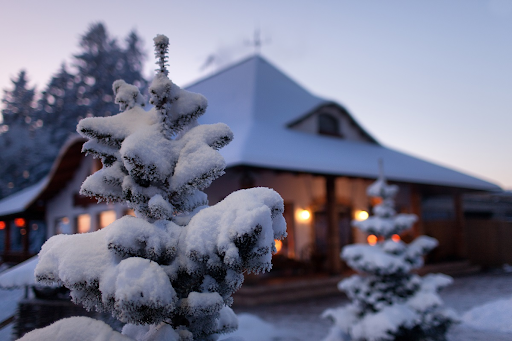As the leaves change color and the air turns crisp, it’s a reminder that winter is just around the corner. To ensure your home remains cozy and comfortable during the colder months, it’s essential to take proactive steps to winterize your space. From safeguarding against chilly drafts to optimizing energy efficiency, this guide will walk you through the key aspects of preparing your home for the winter season.
Inspect and Maintain Heating Systems
Before the winter chill sets in, schedule a professional inspection of your heating system. This includes checking your furnace, boiler, and any other heating appliances. Clean or replace filters to ensure efficient airflow and consider a trial run to catch any potential issues early. Proper maintenance will not only keep your home warm but also prevent any unexpected breakdowns during the coldest days.
Seal Drafts and Gaps
Drafts and gaps in your home’s structure can lead to uncomfortable cold spots and increased heating bills. Thoroughly inspect windows, doors, and any openings in walls or floors. Seal gaps with weatherstripping and caulk to prevent cold air from entering and warm air from escaping. Investing in draft stoppers for doors and using window insulation kits can also make a noticeable difference in maintaining a cozy indoor environment.
Insulate Attics and Walls
Proper insulation is key to retaining heat within your home. Check your attic’s insulation level and consider adding more if needed. Insulate walls and crawl spaces to prevent heat loss. Well-insulated spaces not only keep your home warm but also contribute to energy efficiency by reducing the need for constant heating.
Prepare Plumbing and Pipes
Freezing temperatures can lead to burst pipes, causing significant damage to your home. To prevent this, insulate exposed pipes, especially those in unheated areas like basements, attics, and garages. Disconnect hoses and drain outdoor faucets. If your region experiences extremely cold temperatures, consider leaving faucets dripping slightly to prevent pipes from freezing.
Check and Maintain Fireplaces and Chimneys
If you have a fireplace, ensure it’s ready for use by having the chimney cleaned and inspected. This prevents chimney fires and ensures proper ventilation. Consider installing a chimney cap to prevent debris and animals from entering. Stock up on seasoned firewood and keep the fireplace tools handy for cozy evenings by the fire.
Test Smoke and Carbon Monoxide Detectors
With the increased use of heating systems and fireplaces, it’s crucial to ensure your smoke and carbon monoxide detectors are in optimal working condition. Test each unit and replace batteries as necessary. Install detectors in key areas of your home, such as near bedrooms and common living spaces, to provide early warnings in case of emergencies.
Energy-Efficient Windows and Curtains
Upgrade to energy-efficient windows or use window films to improve insulation. Heavy curtains can also contribute to retaining heat by preventing drafts and cold air from entering. Open curtains during the day to let in natural sunlight, which can help warm your home, and close them at night to minimize heat loss.
Stock Up on Winter Supplies
Be prepared for potential power outages or snowed-in days by stocking up on essential winter supplies. Keep a supply of non-perishable food, bottled water, blankets, flashlights, batteries, and a battery-powered radio. Having these items on hand ensures you’re ready for any unexpected winter emergencies.
Landscaping and Outdoor Preparations
Trim any overhanging branches that could potentially fall on your home due to heavy snow or ice. Clear gutters and downspouts of leaves and debris to prevent ice dams. Consider using salt or sand to de-ice walkways and driveways, enhancing safety during icy conditions.
Wrap Up Outdoor Furniture
Extend the lifespan of your outdoor furniture by storing or covering it during the winter months. Store items like cushions and fabric-based furniture indoors to prevent damage from moisture and cold temperatures. For larger furniture pieces, including tables and chairs, invest in durable covers to shield them from the elements. Additionally, consider rolling up and storing outdoor rugs to protect them from the harsh winter conditions.
Conclusion
Winterizing your home is a proactive approach that ensures your living space remains comfortable and energy-efficient throughout the colder months. By following these steps, you not only create a warm and inviting environment but also save on heating costs and protect your home from potential winter-related issues. Taking the time to prepare now will lead to a more enjoyable and stress-free winter season.


